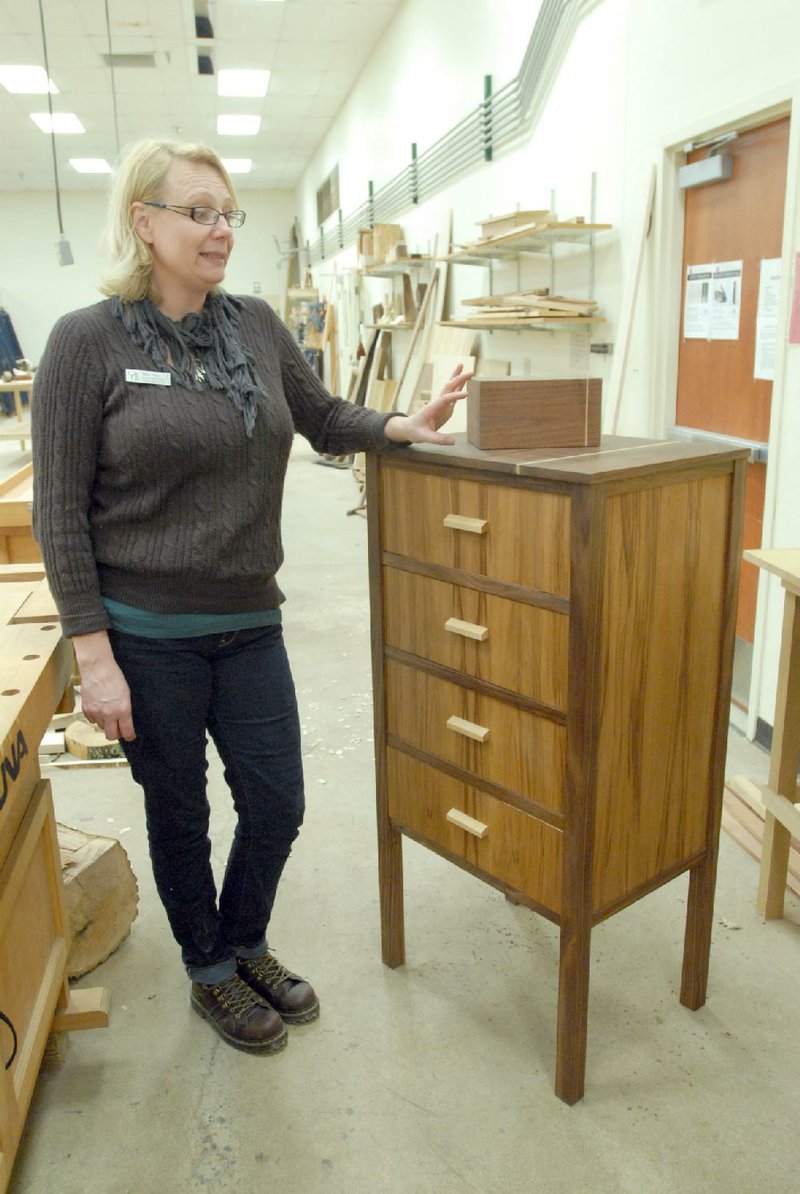LITTLE ROCK — Woodworking and furniture making classes can be difficult to come by in Arkansas, but several arts centers and a few colleges offer woodworking or furniture design courses that are open to the public. They include:
The University of Arkansas at Little Rock offers basic to advanced woodworking and furniture design courses. While most of the students who take these courses plan to get a degree, novices from other fields are also welcome, according to Mia Hall, assistant professor of furniture design.
“We go through a lot of technical skills,” Hall says. “Students have to learn to master both hand tools and machines.” In their first semester, students learn how to make a table or bench while also learning important safety lessons. The second class focuses on boxes and cabinets, while the third semester is all about chairs. Topics for advanced classes include plywood and composites, veneers, bending wood and using alternate materials. For more information, call (501) 569-3182 or see tinyurl.com/ct4d8oe.
The Arkansas Arts Center in Little Rock offers basic woodworking courses designed to help students learn shop safety as well as basic building techniques. UALR professor Hall says, “It’s the perfect place for someone who doesn’t want to go in and get a full-on university degree.” Classes at the Arts Center are three hours a week for 10 weeks. Students learn to make a small table, and taking the basic class lets students apply for open studio time to work on other projects. For more information, call (501) 372-4000 or see arkarts.com.
The Ozark Folk School at the Ozark Folk Center in Mountain View offers a design-your-own workshop option for those who wish to learn any number of crafts including woodcarving and wood turning. For more information, call (800) 264-3655 or see ozarkfolkcenter.com.
The Arkansas Craft School in Mountain View is another good place to start learning woodworking. Founded by craftsmen, the school offers wood turning, woodcarving, woodblock printing and other woodworking courses along with a series of craft workshops throughout the year. For more information, see arkansascraftschool.org or call (870) 269-8397.
North Arkansas College in Harrison offers an introductory furniture making course as well as several courses focusing on cabinet making as part of their wood manufacturing technology program. For more information, see northark.edu or call (870) 743-3000.
The Eureka Springs School of the Arts offers numerous woodworking courses focused on specific time periods or techniques. Civil War woodworking, creative box-making and segmented wood turning are just a few of the workshops offered. Woodworker Doug Stowe teaches the box making workshop, which will teach any student the basics of building furniture. “I teach a lot of box-making because boxes are a very approachable size,” Stowe says. “You can learn almost anything you need to know about furniture making by making a box - how to cut your corners square, how to make any joints you need and so on.” Students can also choose their own woodworking workshop theme as part of the School of the Arts curriculum. For information, see esartschool.com or call (479) 253-5384.
“Probably the one best suggestion I have would be to subscribe to a quality woodworking magazine - there are several - and study it cover to cover each month,” says Joe Doster. “Listen to everyone, study their techniques. Then adapt and apply only those that work best for you in your shop.” DVDs and books are another way of learning basic woodworking techniques if no classes are available in your area. Magazines like Woodwork, Fine Woodworking, American Woodworker and the Woodworker’s Journal are a good place to start.
HomeStyle, Pages 42 on 12/31/2011

